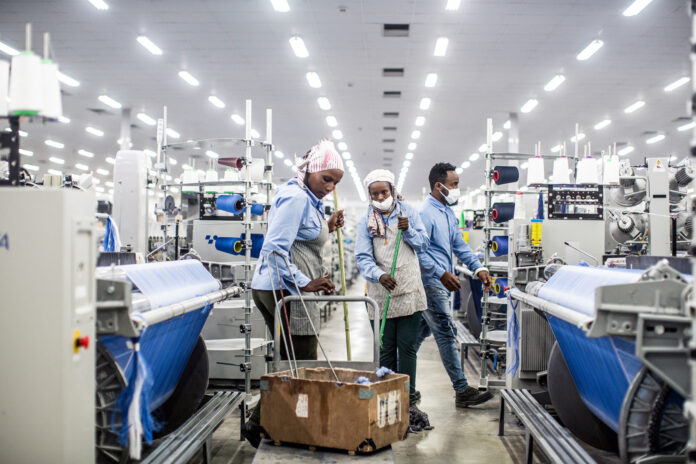
Ethiopia is rapidly emerging as a preferred destination for garment buyers seeking economically viable sourcing alternatives with abundant and cheap labor. Traditionally known for its stable democracy and being the fastest growing economy in Africa, Ethiopia offers a promising investment environment in the textile and garment manufacturing sector. With its strategic geographic location connecting Africa to Asian countries and providing good connectivity to the US and Europe, Ethiopia serves as a link between raw material producing nations and product-consuming markets.
The country has experienced remarkable industrial growth in recent years, with an average GDP growth rate of 10.7% over the last decade. The Ethiopian government is actively implementing the Growth and Transformation Plan (GTP) to further boost the economy, resulting in a surge in investments. This has attracted countries like Turkey, India, South Korea, and China to invest in cotton cultivation and other diverse industries in Ethiopia.
One of the major strengths of Ethiopia as a garment manufacturing hub is its abundant cheap labor. The country has a young population with low labor costs, presenting an ideal opportunity for labor-intensive garment manufacturing. Skilled labor can be hired for as low as US $45 per month, and with the annual population expansion rate at 2.9%, there is a continuous supply of available workforce.
The Ethiopian government has also implemented various incentives to promote industrial growth. These incentives include bulk interest rates, customs duty exemptions on capital goods and spare parts, income tax exemptions for textile and textile products, and export incentives such as duty drawback schemes and access to preferential trade agreements like AGOA, COMESA, and the Generalized System of Preference (GSP) in the USA and Europe.
Although Ethiopia has several strengths as a garment manufacturing hub, it also faces certain weaknesses. Being a landlocked country, Ethiopia is dependent on neighboring Djibouti for sea imports and exports, resulting in increased lead times and additional costs. However, the government is actively working on improving logistics infrastructure, including railway networks, to reduce transit times and improve efficiency.
Another challenge is the lack of raw material suppliers. While Ethiopia has the potential to become a leading cotton-producing nation, currently only 3% of its cotton cultivation potential is utilized. This shortage of quality raw materials limits the expansion and productivity of garment manufacturers. However, investments from various countries are being made to develop cotton cultivation in Ethiopia.
Furthermore, there is a need to enhance technical know-how and adopt global best practices in manufacturing. Collaboration efforts, such as the ETIDI-NIFT Twinning Arrangement, aim to address this challenge by building the capacity of the Ethiopian garment sector through knowledge and technology sharing.
In conclusion, Ethiopia’s stable democracy, fast-paced economic growth, and abundant cheap labor make it an attractive emerging garment manufacturing hub. Despite facing challenges in logistics, raw material supply, and technical know-how, the government’s proactive efforts and incentives for industrial growth position Ethiopia as a promising destination for garment manufacturing in the near future.
